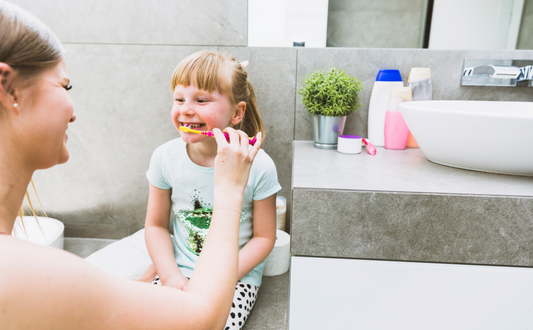Do you have a child who feels like the world is just too much sometimes? 😔
Too much noise, too much light, too much EVERYTHING? If so, they might be experiencing sensory overload – a state where their senses are overstimulated to the point of feeling overwhelmed and unable to cope (meltdowns in the grocery store, anyone?) But don’t worry, there are ways to reduce sensory overload and make the world a more calming, manageable place for your child.
Noise is one of the biggest culprits when it comes to sensory overload. If your child is in a loud environment, it can be hard for them to focus and feel comfortable. That's where noise-cancelling headphones come in. They use technology to block out the sounds around your child, leaving them in a more peaceful space. Whether your child is in a busy classroom or a noisy playground, noise-cancelling headphones can make a massive difference. But be careful – there is a huge variation when it comes to quality and effectiveness. Your best bet is a pair that can block 22 decibels with an ultra-thick foam ear muff for maximum comfort and noise absorption. Bonus points if it features a fun, unique pattern, like these unicorn and galaxy print noise-cancelling headphones.
Creating a designated calm space in your home can also be helpful in reducing sensory overload. This space should be quiet and free from distractions, with soft lighting, natural colours and textures, and comfy furniture. You might consider including a sensory swing, a cocoon-like safe space that helps your child feel extra safe and snug. Encourage your child to spend time in this space when they are feeling overwhelmed or anxious.
Weighted blankets and compression vests can provide a sense of comfort and security for children who experience sensory overload. The added weight of a blanket or vest can have a calming effect on the nervous system, helping to reduce anxiety and stress and induce a feeling of calm. Think about how a baby is soothed with a snug swaddle or we're comforted by a tight cuddle – it’s all about that gentle pressure.
Sensory toys, like click clack fidget slugs or fidget poppers, can provide a physical outlet for children who are feeling overwhelmed. These toys can help to reduce anxiety and provide a distraction from sensory overload. You can also try providing sensory bins filled with different textures, such as sand or rice, for your child to explore.
Establishing a consistent routine can also be helpful in reducing sensory overload. Knowing what to expect can provide a sense of security for children who struggle with sensory processing. Try to stick to a daily schedule, including regular mealtimes, bedtime routines, and structured playtime. Your child will thank you for it!
There’s no denying that reducing sensory overload can be a challenge, but it's important for your child's well-being. By using strategies like noise-cancelling headphones, creating a calming space, using weighted blankets, providing sensory toys, and establishing a routine, you can help your child feel more comfortable and secure in their environment – leading to fewer meltdowns and a happier, more relaxed kid!




